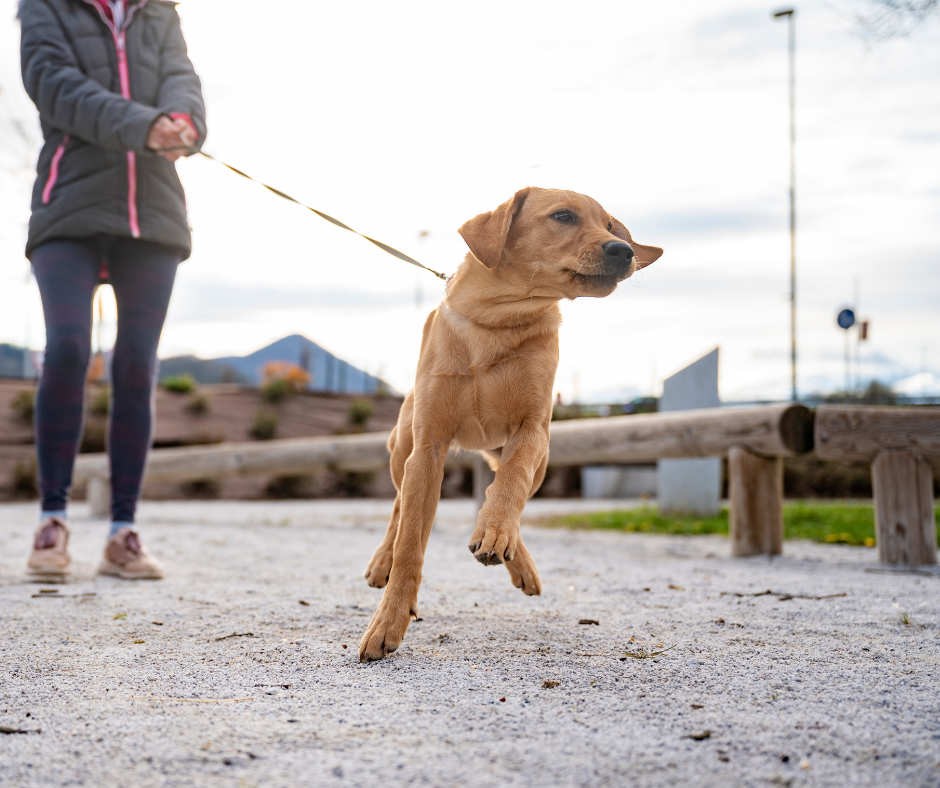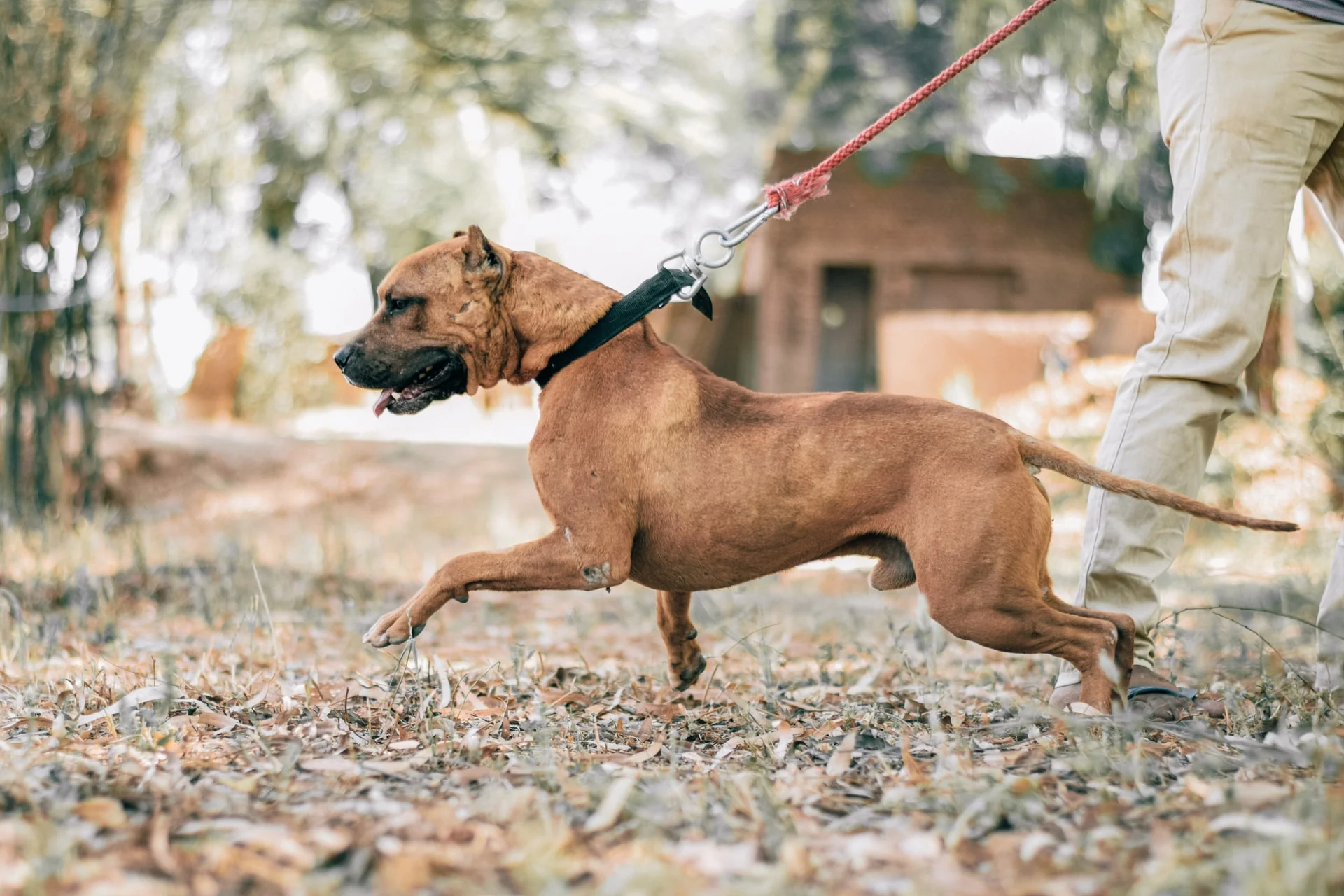If you’ve ever felt like you were being walked by your dog instead of the other way around, you’re not alone. Leash pulling is one of the most common challenges dog owners face — and one of the most frustrating.
What should be a relaxing walk often turns into a tug-of-war that leaves your arm sore and your patience worn thin.
But here’s the good news: leash pulling isn’t a personality flaw or stubbornness. It’s simply a behavior — and like any behavior, it can be reshaped with the right approach. No harsh corrections, no choke chains, no frustration. Just clear communication, consistency, and a bit of patience.
Let’s break down why dogs pull, and how you can teach them to walk politely by your side — without turning walks into a battle.
Why Do Dogs Pull on the Leash?

To fix leash pulling, it helps to understand what’s behind it.
- They’re excited: Dogs naturally walk faster than humans and the outdoors are full of exciting sights and smells.
- They don’t know the rules: Many dogs have never been taught how to walk politely on a leash.
- Pulling works: If a dog pulls and it gets them where they want to go (faster!), they learn that pulling is rewarding.
In other words, leash pulling isn’t your dog being “bad.” It’s them doing what works — until they’re taught otherwise.
Step 1: Use the Right Gear
Before you dive into training, it’s worth checking your tools. The right leash and harness can make a world of difference.
- No-pull harness: These harnesses (like the Easy Walk or PetSafe brand) clip in front of the chest, gently guiding your dog back toward you when they pull.
- Regular 4–6 ft leash: Avoid retractable leashes — they actually encourage pulling by teaching dogs that more pulling = more freedom.
- Treat pouch: Keep rewards easily accessible so you can reinforce good behavior immediately.
You don’t need fancy equipment — just something that gives you control without pain or discomfort.
Step 2: Train at Home First
Start indoors or in your backyard where there are fewer distractions. You want your dog to focus on learning, not squirrels.
Practice these steps:
- Leash up, reward calm behavior: If your dog gets overly excited just seeing the leash, wait until they settle before putting it on.
- Take a few steps: Walk a few feet with your dog beside you.
- Mark and treat: The moment they walk calmly at your side, say “Yes!” or click (if using a clicker), and give a treat.
- Stop when they pull: As soon as they pull, stop moving. Don’t jerk the leash — just stand still. Wait until the leash slackens or they return to your side, then resume walking.
This “stop-and-go” game teaches them that pulling gets them nowhere, while staying close earns rewards.
Step 3: Practice Loose-Leash Walking Outside
Once your dog has the basics down indoors, it’s time to take it to the real world. Start with low-distraction areas like a quiet street or park path.
Tips for success:
- Bring extra tasty treats (chicken, cheese, etc.) to compete with outdoor distractions.
- Keep sessions short and positive — 10–15 minutes is plenty at first.
- Use a cheerful voice to encourage your dog to stay engaged with you.
If your dog starts pulling ahead, calmly stop walking and wait. When they come back to your side or turn to check in, reward and continue. You can also switch directions to get their attention back on you.
Step 4: Use the “Be a Tree” and “Change Direction” Tricks
Two classic techniques for leash training are:
1. Be a Tree
When your dog pulls, stop in place and become “a tree.” Don’t move forward until they return to your side or look back at you. The moment they do, reward and continue.
2. Change Direction
Randomly turn and walk in the opposite direction when your dog pulls. This teaches them to pay attention to your movement. Praise and treat when they follow you without pulling.
These strategies keep walks dynamic and remind your dog that you’re leading the way — not the other way around.
Step 5: Be Consistent — and Patient
Leash training doesn’t happen overnight. There will be times when progress feels slow, especially if your dog is strong, reactive, or easily overstimulated. But with regular, gentle practice, your dog will learn.
What matters most is consistency. If your dog pulls and sometimes it works (for example, when you’re in a rush and let them drag you to the park), it sends mixed signals. Every walk is a teaching opportunity — even those quick potty breaks.
Bonus Tips for Long-Term Success
- Reward frequently at first: Eventually, you can fade the treats, but during training, reward generously.
- Practice in short bursts: Two 10-minute sessions daily can be more effective than one long, frustrating walk.
- Stay calm: Frustration shows in your body language. If you’re getting annoyed, take a break and try again later.
- Celebrate small wins: Even a few steps of loose-leash walking are worth celebrating in the beginning.
Final Thoughts
Walking your dog should be a joy, not a struggle. And with some gentle, consistent training, it absolutely can be.
Remember: your dog isn’t trying to be difficult — they’re just excited and eager to explore the world. Your job is to guide them, one walk at a time, with kindness and clarity. And when you finally stroll down the sidewalk with a loose leash and a relaxed pup by your side, you’ll know all the effort was worth it.
Here’s to happier, calmer walks — for both of you.

